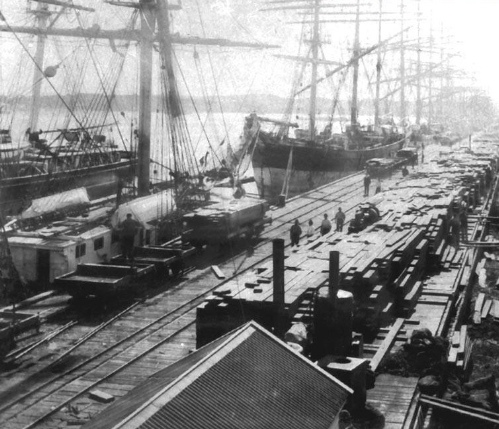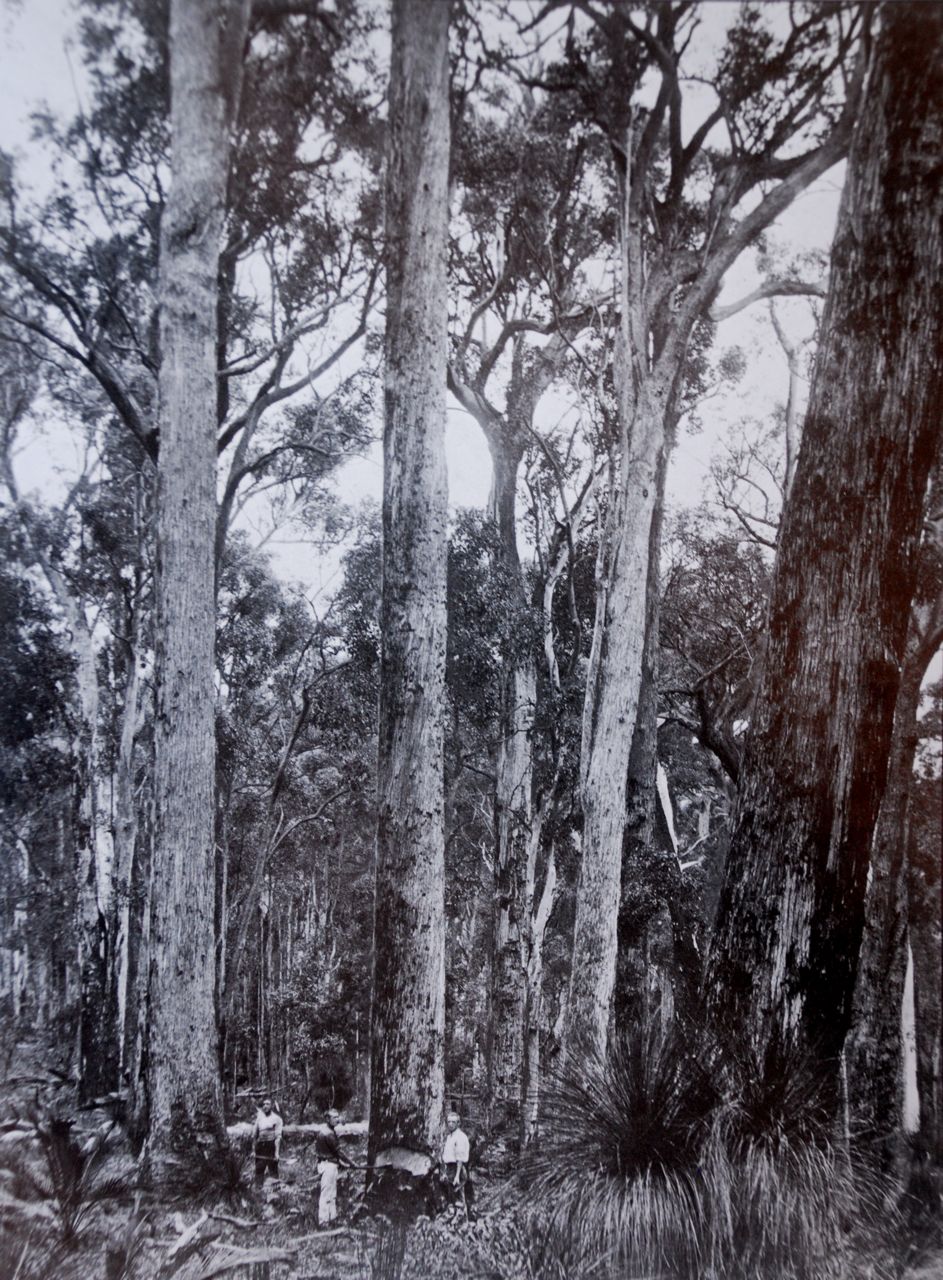Jarrah is a eucalyptus tree with long, grey striated bark. Today I’ve been in the Jarrah forest south of Mundaring in the Darling Hills east of Perth. I went out there in the hope of finding some old-growth Jarrah forest to walk amongst. I talked to a local fire officer with Conservation and Land Management, a guy who would know, and told me that he only knew of the odd old jarrah standing about the place and of no virgin forest. He was right, the whole forest I made my way through had a feeling of unhallowed youth about it. There were no groves of four hundred year old trunks to be found. How dissapointing.
The fact is that only two per cent of jarrah forest remains which has never been logged (karri is doing better in the south-west, where two thirds of old-growth remains). I am not against the harvesting of timber. Quite the contrary: it takes ten times the amount of energy to produce an iron girder as to produce a wooden beam, and as long as forests are selectively logged and not clear-felled, all those who care about the planet should very firmly support the harvesting of timber and see wood as the building material of the twenty-first century. However the Australians of earlier years went much too far in their chopping jarrah down and shipping it off around the world.
Here jarrah lies on the Fremantle dock in 1899. What the people of this era called ‘swan river mahogany’, a superb building material for its extreme hardness, went off in massive quantities to lie under the pavements of London, amongst other places and uses (actually in this photo they were building the docks with the wood but you get the idea). In few places in the world could you have found, in the early 1800s, such a huge swathe of mature hardwood forest standing on such dry and nutrient-poor soils, as the jarrah forest of the Darling Range. A pity these dead men and women didn’t appreciate this fact.
The actions of the dead loggers of earlier years left me wandering around the Jarrah forest today, feeling nonplussed. I was unable to find a bit of ground where the grey trunked elders of the forest towered over me. Well, at least I found this transient forest floor dweller amongst the winter leaf litter. That was some kind of compensation.
In An Old Look at Trees: Vegetation of South-Western Australia in Old Photographs, compiled by Robert Powell and Jane Emberson (1978) you can find the following photograph of virgin jarrah forest near Jarradale, south of Perth. It was taken in 1896. This is what the jarrah forest used to look like:
It is the birth-right of all people who live in Perth to go into the hills near our city and walk through big, beautiful jarrah forest like this. We have been deprived of this birth-right by the blasphemy of dead men.




